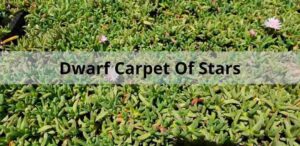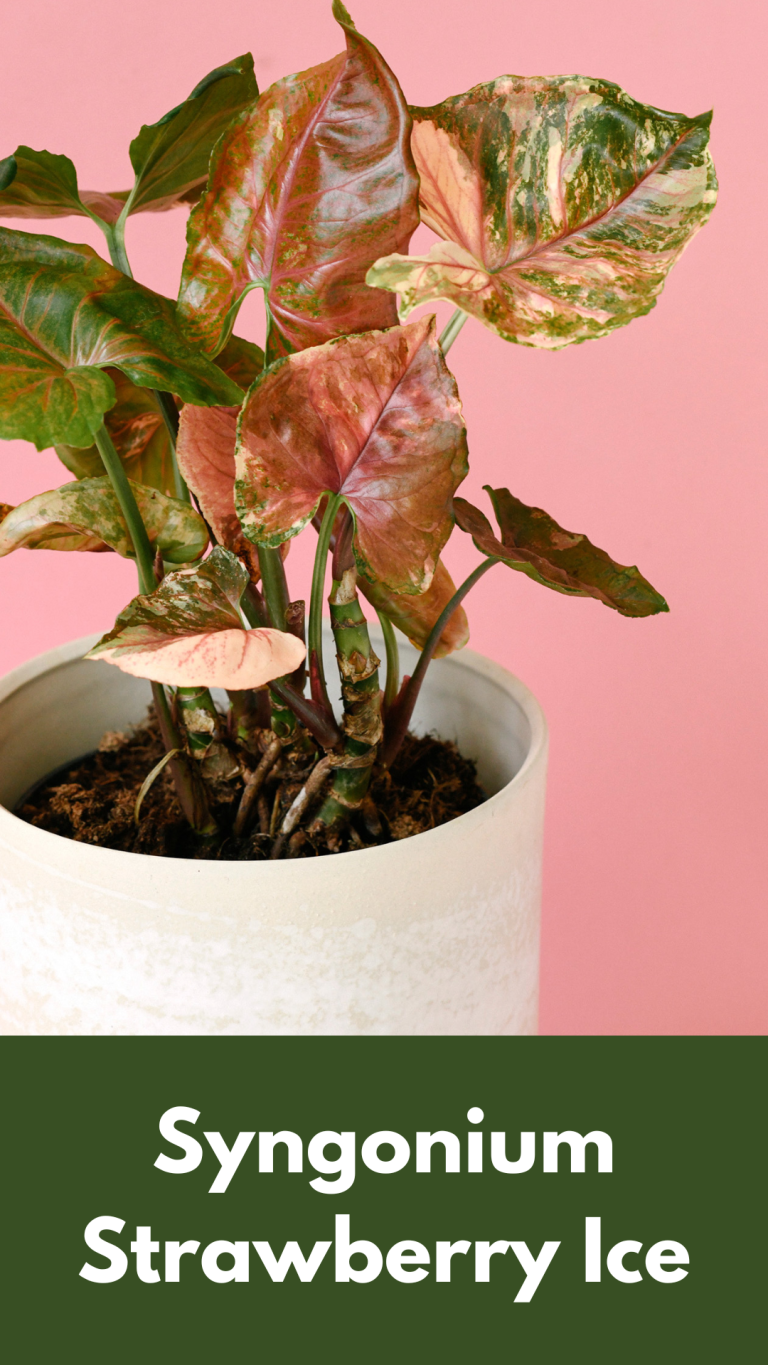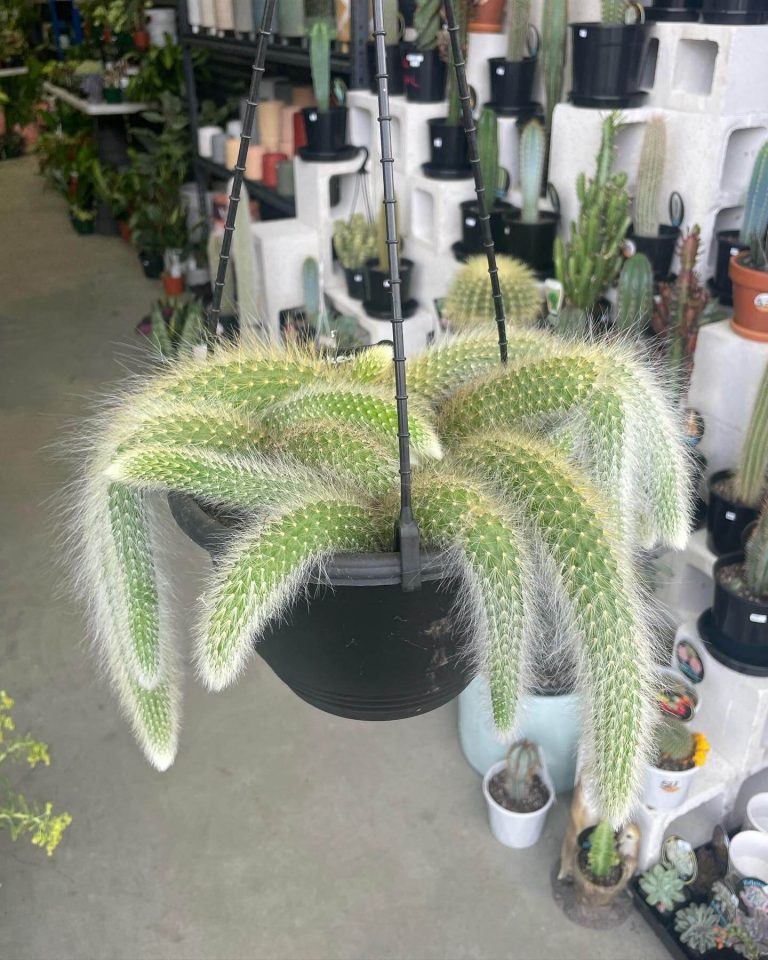Dwarf Carpet Of Stars
Dwarf Carpet Of Stars also known by its botanical name Ruschia Nana, it is a beautiful lawn grass native to the Western Cape Province in the Republic of South Africa, within Robertson, Renosterveld, and Barrydale Districts. The plant does best in dry regions, and in its natural habitat, you are most likely to find it on dry stream beds.
It is a hardy plant that can endure direct, hot sun, and it requires less water. The dwarf carpet of stars needs 75% less water than the ordinary grass used for turfs, yet it is resilient enough to be used as turfgrass. The succulent is not toxic, making it an even better choice for your backyard or some turf. Unlike ordinary grass that tends to turn yellow in winter and fall, Dwarf Carpet Of Stars remains green throughout the year. Therefore, it is ideal for displays that require it to be green throughout the year.

This plant has been categorized as a dwarf succulent, and the plant grows to just two or three inches high. It is a runner that lays flat on the ground. It can run to several feet from where it is planted. As it runs on the ground, the plant then produces 1/2 inch long projections, the succulent’s leaves. When many of these are planted together, they form a thick grass carpet. The fact that these leaves never grow beyond this height is a great advantage because, unlike ordinary grass, the carpet this succulent offers doesn’t need to be mowed at all.
Dwarf Carpet of Stars is sought after for its lush green foliage with a reddish outline. It also has white flowers with touches of purple, but these come and go. This plant blooms in spring and summer, but it has a secondary flowering season in the fall. Fall flowering usually has fewer flowers than the primary season.
Each plant can grow to cover two square feet, but you should plant them about six inches because this proximity between plants allows them to cover all gaps to form a thick carpet. Once you plant it and give it the right conditions for growth, the dwarf carpet of stars will completely cover the ground on it within six months. This is a much shorter time than conventional grass takes to cover the ground. It is, therefore, a much better option than traditional grass.
Ruschia nana has a rubbery texture and a woody root section. Its exterior is tough, protecting its leaves from being scorched by the direct sun rays it enjoys. Although the exterior is challenging, the leaves are soft to the touch, and it is the kind of foliage on which you can comfortably walk barefoot. Once it has grown, it remains good for three to four years, after which it can turn woody. Replace it after this point. It may be advisable to change it in phases if you use it for a display as its life expectancy approaches the end. By doing this, you will always have some greenery where you need it.
You will be pleased to know that you can plant it in any season of the year. However, it grows fastest between spring and autumn.
You May Like These Posts:-
Philodendron Deja Vu: Care & Propagation
Philodendron Painted Lady (Variegated): Care And Propagation
Money Plant: Care, Types And Propagation
Monkey Tail Cactus: Care, Propagation And Price
Dwarf Carpet of Stars Care
The dwarf carpet of stars can give you a fantastic lawn or turf if you take good care of it. The following are the best conditions for this plant and how you can provide them for the best results.
Light
This plant is heat-hardy; it does well under direct sunlight since its leaves are tough enough to keep to withstand sun rays. For best results, it is recommended that Ruschia nana stays under direct sunlight for at least six hours daily. The plant also does well in shaded areas as long as the light is coming through. It is, therefore, possible to grow it outdoors and indoors effectively.
Temperature
This plant can grow within a relatively wide temperature range. Anything between 20oF and 120oF (-7o – 49oC) works for this plant. The range of temperatures it can withstand is a testament to its hardiness. It allows it to grow successfully within a wide range of localities and in areas where temperatures vary wildly across seasons.
Soil
This succulent can do well in various soils, but it will perform optimally when you plant it in fertile soil. The ground should also be clean and free from pests and diseases. Also, the plant does best in soil with more or less neutral pH.
This is succulent, and succulents don’t do well in waterlogged soil. It causes them to get root rot. Therefore, the soil in which you grow your Ruschia nana should be well-drained. The best way to ensure the soil is well-drained is by ensuring it has a good percentage of gravel. Sandy soil is ideal for this.
Unfortunately, sandy soil usually lacks organic matter to support this plant. You can remedy the lack of fertility by mixing the soil with organic matter to feed the plant and hold the little moisture needed by the plant.
If the soil you are planting this succulent has a high clay content, it is too thick for Ruchia, loosen the top three to four inches by plowing and harrowing it. You can make the soil a bit sandy after this, and it would allow the roots to penetrate the soil and grow fast.
Ensure any grass that previously occupied the land where you want to plant this succulent is removed. Some types of grass, such as Kikuyu and Bermuda grass, have a dense network of roots that make it impossible for ruschia nana to survive. Ensure you have to remove them altogether.
Water
The Dwarf Carpet of Stars needs much water in the early stages of growth. After establishment, it is healthy to water it every seven to ten days, depending on how hot it is where you are growing the plant. We had talked about the temperature above so you can match the low temperatures with more days before watering and vice versa.
Watering and soil type go hand in hand in ensuring the plant’s well-being. You can tell you are overwatering if you see your plant’s leaves turning yellow. Lay off watering for a while, and the leaves will go back to normal. If, on the other hand, leaves turn light green or develop grayish shades, your plant needs more water.
Fertilizer
You can fertilize the soil using organic matter when planting as this plant does well in rich soil. About one month after planting, when it starts producing leaves, you should apply a fertilizer with Nitrogen, Phosphorus, and Potassium to enhance root and leaf formation.
It is hardly necessary to fertilize the soil after the plant is wholly formed and cover the ground you have planted it. However, you might need to fertilize once in a while using organic fertilizer.
Humidity
The humidity level doesn’t need to be too high, but it can tolerate a relatively wide range. This level of tolerance enables it to survive various seasons in the year. Too much humidity when it is hot can predispose it to pests and diseases.
Mowing and Mulching
The dwarf nana doesn’t grow beyond two inches and doesn’t need mowing. Therefore, it saves you the time you would have spent mowing the lawn. The plant also covered the entire ground where it is planted, and it needs no mulching.
Erosion Tolerance
It has high erosion tolerance, and it can also withstand pressure. You can plant it on footpaths and even as turf in sports facilities and receive the best from it.
Propagation
You can propagate Ruschia nana either by cuttings or by seeds.
Propagation by Cuttings
Get some healthy cuttings from the woody section of the plant and allow them three or four days to callous. Next is to plant them in a cactus mix and water them daily. Rooting should take about a month.
Transfer the well-rooted cuttings to the place where you intend to plant them; ensure the ground is well prepared for drainage, well-fertilized, and well aired. Water the plants every day until they are well established, after which you can water once every seven to ten days.
Propagation by Seeds
You can propagate this beautiful plant using its seeds. You can buy seeds that have already been prepared or collect yours. To collect seeds, you need to know that these seeds grow in pods, and you should allow them to mature and the pods to dry. Collect some dry pods and break them apart and collect the seeds.
One may want to clean the seeds to remove the chaff; you can also take a day to dry the seeds under the sun. You can sow the seed in any season, they will germinate, but they will grow slowly until spring, when the growth rate will pick up and continue through summer.
If you sow the seed in winter, put them in a vented container or an unheated greenhouse. This way, they will get the right conditions for growth.
You can sow your seeds indoors, outdoors, and directly into the ground where you want to plant them if you are propagating in spring or summer. The seeds are so tiny that sometimes you can germinate them on a damp paper towel.
Is It Foot Friendly?
Yes, ruschia nana is foot-friendly. It is tough enough to resist pressure, but it is also quite soft and comfortable to the foot. You can walk on it barefoot, and your pet’s paws are also safe walking around it.
Why is My Dwarf Carpet Turning Yellow?
The most likely reason is that you are overwatering it. Lay off watering for a while, and it will be okay.
Is Dwarf Carpet Of Stars Safe For Dogs?
Yes. It is safe for dogs because, as we saw, it is foot and paw-friendly, and it is not toxic when ingested.
Price
The price can range from $60 depending on who is selling and where the succulent will be shipped after purchase.
Where to buy dwarf carpet of stars?
You can buy from the local nursery if they stock them. Order online if you can’t find it locally. It is always advisable to order from a reputable vendor to ensure you get a healthy plant and in good time.
Here is a video on YouTube that tells more about the Ruschia Nana aka Dwarf Carpet Of Stars!!
Pros
- It is easy to maintain
- It is foot-friendly
- It is non-toxic
- It can grow in many different places
- It doesn’t need a lot of water
- It can withstand high temperatures
- It is erosion and pressure-resistant
- It can stay alive for up to four years, which is relatively long
- It is fast-growing compared to varieties of ordinary grass
- It is resistant to pests and diseases
- In terms of snow, dwarf carpet of stars can tolerate light snow cover, but heavy snow or prolonged periods of freezing temperatures may damage or kill the plant. Similarly, while it can handle humid conditions with lots of rain, it may suffer if the soil becomes waterlogged or if humidity levels are extremely high for prolonged periods of time.
Cons
- It is not perennial like ordinary grass varieties like Kikuyu and Bermuda grass.
Conclusion
Ruschia nana has a wide variety of applications; you can use it for your lawn and ensure it won’t injure you, your children, or your pets. Its non-toxicity is icing on the cake. You can also use this plant to fill in the spaces between paving stones. The fill will be lush and beautiful. It will also be solid and durable.
The Dwarf Carpet of Stars is an easy plant to take care of, and it will have your lawn covered in six months. It is, therefore, particularly helpful for people with commercial properties they want to put in the market quickly. Planting this succulent in areas where greenery is needed six months before project completion will have the whole place looking beautiful. The beauty with it is that it is not just for show if you plant it in this context. It will remain in great shape for years with good care. It is the real deal.




We planted carpet of stars last summer in So. Cal. It looks great and is great to walk on, we love it. However we have a good sized patch of clover right in the middle. Do you have any suggestions on how to rid the area of clover?
Many thanks,
We suggest you to use manual methods to remove the clover. You can use spade to remove it along with its roots. Moreover, Clover grows in areas with low nitrogen areas. If you become able to add proper amount of nitrogen, Then – It willn’t be a problem for Dwarf Carpet Of Stars. Thanks.
Could Dwarf Carpet of Stars handle an environment where it is covered in snow for the winter?
I planted my backyard with Rushia and it is starting to confuse me, now that is ‘s growing well and starting to fill in. You say yellow leaves indicate too much water, and grey is too little water. However some of the clumps are green, yellow, and grey, all on the same plant. Some of the grey parts are also growing into lumps or mounds instead of spreading horizontally. What do you recommend I do?
What is the approximate time to wait to plant Ruschia Nana plugs AFTER applying pre-emergent to our soil?
I live in zone 6 and we get snow, are pretty humid with lots of rain and a clay heavy soil.
Would this carpet of stars survive and thrive here?